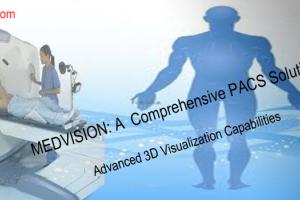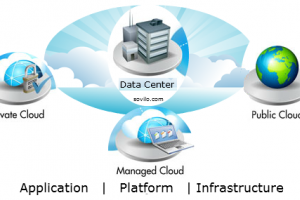Big Data & Analytics
We provide s/w development services in big data and analytics space.
Today, enterprises and individuals are generating exabytes of data. Analytics is at its best use when operated on such large data sets. Then, when analytics is integrated into Financial Instruments, the resulting simplified decision making process, helps executives focus on issues which matter most for the growth of the product and company!
Big data is a collection of data sets so large and complex that it becomes difficult to process using on-hand database management tools. The challenges include capture, curation, storage, search, sharing, analysis and visualization. The trend to larger data sets is due to the additional information derivable from analysis of a single large set of related data, as compared to separate smaller sets with the same total amount of data, allowing correlations to be found to "spot business trends, determine quality of research, prevent diseases, link legal citations, combat crime, and determine real-time roadway traffic conditions".
We regularly encounter limitations due to large data sets in many areas, including meteorology, genomics, connectomics, complex physics simulations and biological and environmental research. The limitations also affect internet search, web apps, mobile apps, finance and business informatics. Data sets grow in size in part because they are increasingly being gathered by ubiquitous information-sensing mobile devices, aerial sensory technologies (remote sensing), software logs, cameras, microphones, radio-frequency identification readers, and wireless sensor networks.
Big data requires exceptional technologies to efficiently process large quantities of data within tolerable elapsed times. Suitable technologies include A/B testing, association rule learning, classification, cluster analysis, crowdsourcing, data fusion and integration, ensemble learning, genetic algorithms, machine learning, natural language processing, neural networks, pattern recognition, predictive modelling, regression, sentiment analysis, signal processing, supervised and unsupervised learning, simulation, time series analysis and visualisation. Additional technologies being applied to big data include massively parallel-processing (MPP) databases, search-based applications, data-mining grids, distributed file systems, distributed databases, cloud computing platforms, the Internet, and scalable storage systems.
When we think of Big Data, the three Vs come to mind – volume, velocity and variety. Just as the amount of data is increasing, the speed at which it transits enterprises and entire industries is faster than ever. The type of data we’re talking about includes hundreds of millions of pages, emails and unstructured data, such as Word documents and PDFs, as well as a nearly infinite number of events and information from every type of enterprise data center— such as financial institutions, utility companies, telecom organizations, manufacturing facilities and more. Content can be generated by everything from common customer transactions, such as phone calls and credit card usage, to manufacturing facility transactions, like machine maintenance and operational status updates. All of this information needs to be analyzed, acted upon (even if that action is deletion), and possibly stored.
Another important aspect of Big Data involves protecting information and keeping it moving, even during disruptive events. Things like inclement weather, a sudden load on an energy grid (such as people plugging in their electric vehicles every evening) or mechanical failure can cause brown outs and black outs that will have utility companies scrambling to get their service trucks out the door before the flood of service calls begins. For example, last summer in some country, a transistor failure caused a power outage at major cloud computing data hubs for Amazon and Microsoft – what followed was a series of failures that resulted in partial corruption of the data base and the deletion of important data.
Technology Keeps Pace
Fortunately, the following trends promise to provide tools and technologies that can help industries and enterprises involved with handling, storing and transmitting data:
Faster data capture and analysis. New tools allow this to happen as quickly as the data is generated. One example: real-world models of events.
More intelligent, automated decision-making. Developers are creating software and languages designed to handle intricate “if/then” scenarios, empowering administrators to customize responses to fit any possible scenario.
Distributed storage techniques and cloud computing. These include the conversion from tape to disk, de-duplication, flash storage and the rapid adoption of 100 Gigabit Ethernet, replacing the fibre channel. All of this allows for more storage capacity and new challenges of retrieval of data and on the fly computing, without necessarily storing everything.
Big Opportunities
According to research by McKinsey & Company, Big Data creates value in the enterprise by:
- Making information transparent and usable at higher frequency;
- Allowing more accurate and detailed performance information on everything from product inventories to sick days, exposing variability and boosting performance;
- Enabling segmentation of customers to more precisely tailored products or services;
- Improving decision-making through more sophisticated analytics; and
- Optimizing products and services. For example, sensors embedded in products can create innovative after-sales service offerings, such as proactive maintenance (preventive measures that take place before a failure occurs or is even noticed).
New and more sophisticated data analysis capabilities support productivity growth, innovation, and consumer surplus, as long as the right policies and enablers are in place.
About our Expertise
To provide business value from unstructured data., we not only work with customer's data but also with the data collected from the broader web.
We specialize in -
- Apps Architecture
- System Architecture
- Storage Architecture
Our services offerings -
- Evaluate your current system/deployment
- Discuss big data strategies and suggest the top 3 options
- Design the apps, systems and storage architecture
- Development and integration.
- Smooth migration from existing deployment
- Training and Support
Development Technologies
- MapReduce: Hadoop MapReduce
- NoSQL Database: HBase, Cassandra, MongoDB, Riak
- File Systems: HDFS, Gluster, GPFS, Isilon, Lustre
- Data Warehouse DBMS: IBM, HP, Teradata, Oracle, EMC
- In-Memory DBMS: SAP HANA, Oracle Exalytics
- Business Intelligence: Datameer, Karmasphere.
What Differentiates Us?
We are experts in handling 3 Vs of big data and take it to 5 Vs and develop analytics around it.
Our big data analytics can reveal insights hidden previously by data too costly to process, such as peer influence among customers, revealed by analyzing shoppers' transactions, social and geographical data.







